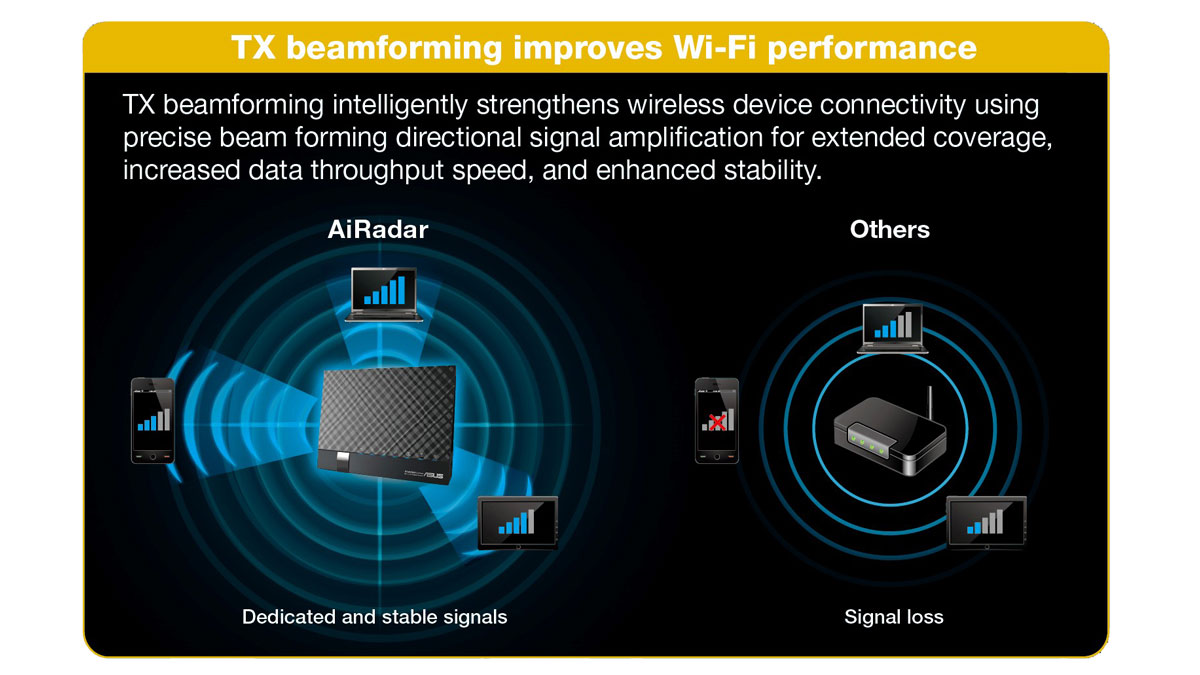Why Jump from N to AC?
As wireless AC continues to be the dominant standard for newer electronic devices, the time for Wireless N is about to run out.
The IEEE 802.11ac or commonly known as Wireless AC, introduced 2013, supersedes the older 802.11n standard albeit with backwards compatibility with legacy wireless standards such as 802.11a, 802.11b, 802.11g, and of course 802.11n.
Whenever something new comes up, the first thing that consumers will look for would be the benefits of the upgrade. So what can Wireless AC bring to the table in help an otherwise undecided consumer?
Let’s start off with speed. Wireless AC has been in the market for quite a while now, and numerous figures for its speed are already available. To make it simple, the illustration below perfectly describes the vast improvement of the throughput of Wireless AC compared to the previous iteration of it. An increase in speed doesn’t necessarily translate to making your internet faster, but higher throughput values like this will be an edge to end users that utilize their networks for large file transfers as this will lessen wait times for a transfer to complete.

Another advantage would be content streaming for high resolution TVs. Having a TV connected to a 5GHz band on your Wireless AC router ensures a buffer-free experience when streaming video content to a 4K resolution display.
Upgrading from Wireless N to Wireless AC also extends the signal reach of the Wi-Fi. Wireless AC thrives in the 5 GHz band giving users higher bandwidth at further distances. Comparing the speeds of Wireless N and Wireless AC at the same distances will provide users operating on the 5 GHz band of Wireless AC up to 3x the speed of the older WiFi standard. With this being said, end users with a multitude of bandwidth-eating devices such as gaming desktops, laptops, and hi-res streaming TVs are recommended to connect to the 5 Ghz band.

The 5 GHz band also declutters your wireless network. 2.4 GHz is widely used by electronics that may interfere with this wireless band and in turn may lead into signal degradation and/or reduced peak speeds. 5 GHz however has a greater number of channels to operate in, addressing the issue of interference.
Before concluding the advantages for Wireless AC, it has another ace up its sleeve, Beamforming technology. This development that can be found on various ASUS routers and it enables the router to intensify the signal to a connected device, avoiding the hassle for an end user to locate where the strongest signal is in an area.

Recommended AC Routers:
To take full advantage of the benefits of Wireless AC, devices connected to it should also sport chipsets supporting the said standard. This shouldn’t be an issue as almost all electronic devices found in the market today comes pre-equipped with Wireless AC support.
| Model Name | Network Standard | Signal Coverage | No. of Users |
| RT-AC53 | AC750 Dual Band | Small House | 10-15 |
| RT-AC1300UHP | AC1300 Dual Band Hi-Powered | Small House | 15-20 |
| RT-AC68U | AC1900 Dual Band | Medium House | 40-50 |
| RT-AC86U | AC2900 Dual Band | Medium House | 40-50 |
| Lyra Trio | AC1750 Dual Band | Large House | 60-70 |
| RT-AC88U | AC3100 Dual Band | Very Large House | 60-70 |
| GT-AC5300 | AC5330 Tri Band | Very Large House | 60-80 |
With electronic devices connecting to the internet and possessing new technologies, the 802.11ac connection is now the best option versus the trusty old 802.11 n wireless standard.
